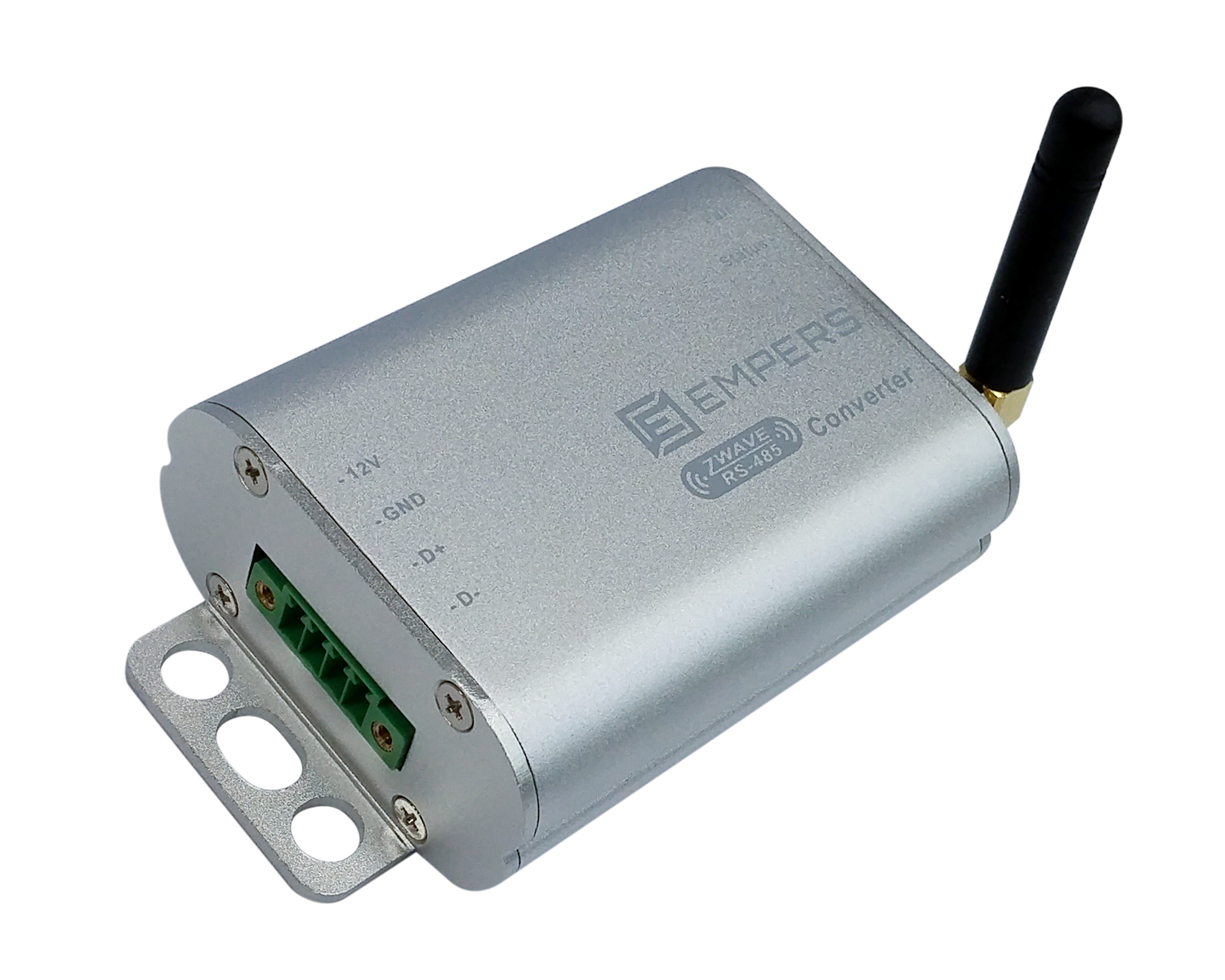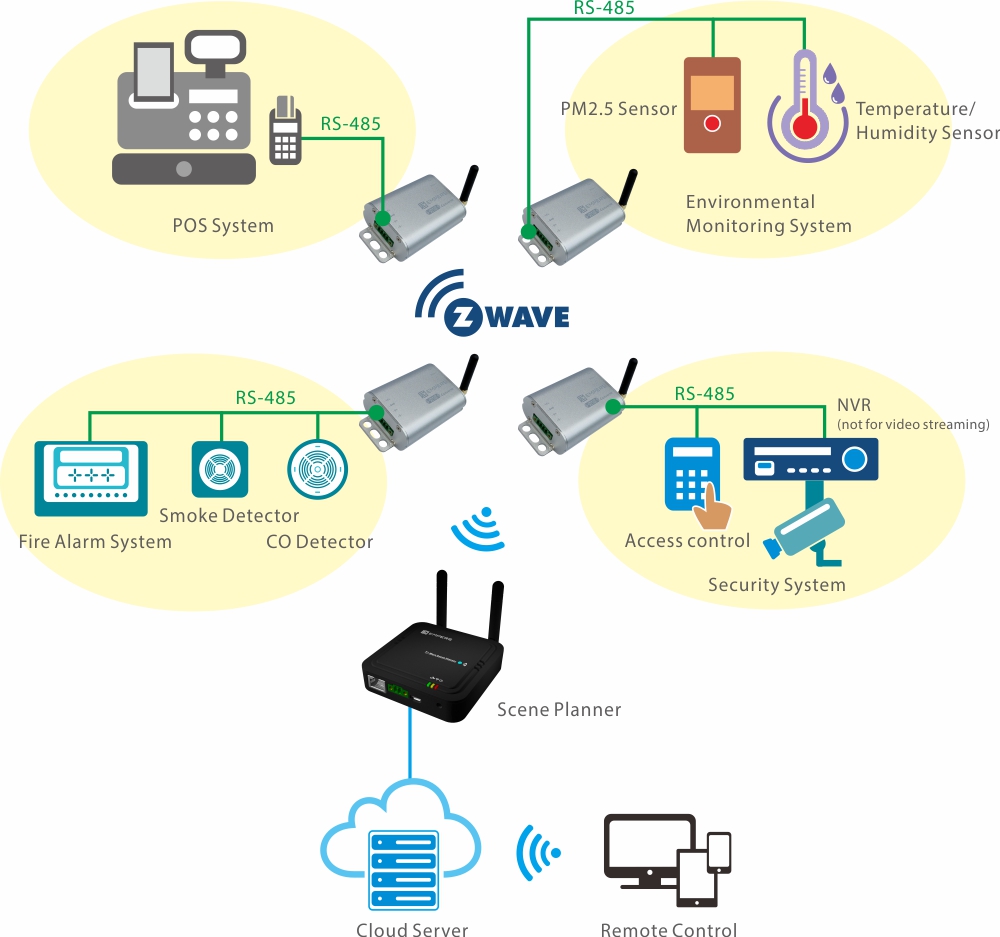ZC-120 RS-485 to Z-Wave Converter
RS-485 (Recommended Standard 485) is a standard maintained by the Electronics Industry Alliance (EIA). RS-485, also known as TIA/EIA-485-A, was created to meet the needs of electronic component designers for longer cable lengths, increased throughput and control of multiple devices.

Z-Wave to RS-485
The unique Z-Wave to RS-485 Converter is created to give the great wireless capability to those existing devices and products built with RS-485 communication ports. It provides an effective means to extend product lines without drastically redesigning existing products and systems. When Z-Wave to RS-485 Converter is used as the wireless link, existing products and systems may be extended with no disruption and easily to be included into a Z-Wave network.
Benefits:
- Include the non-ZWAVE products into a Z-Wave network
- Ease of use and deployment
- Cost effective
- Extended range capabilities
- Portability
- Ease and flexibility of installation
Download
Application

| Radio Z-Wave | |
|---|---|
| Radio Transceiver | Receiver sensitivity without SAW lter down to -105dBm@9.6bps |
| Transmit mpower without SAW lter up to +6dBm | |
| Z-Wave 9.6/40/100kbps data rates | |
| Supports all Z-Wave sub-1 GHz frequency | |
| RS-485 Side | |
| Connector | Terminal Block |
| Signals | RS-485-2w: Data+, Data-, GND |
| RS-485 Data Direction Control | ADDC® (Automatic Data Direction Control) |
| Z-Wave Communication | |
| Baudrate | -21~+2.5dBm |
| Output Power | ADDC® (Automatic Data Direction Control) |
| High Sensitivity | -99dBm@9.6kbit/s, -97dBm@40kbit/s, -93dBm@100kbit/s |
| Appearance | |
| Dimension | 94x56x27mm(LxWxH), 220 Gram |
| Housing Material | Aluminum |
| Color | Silver |
| Environmental Limits Operating | |
| Operating Temperature | -20 to 70°C |
| Storage Temperature | -40 to 85°C |
| Ambient Relative Humidity | 5 to 95% (non-condensing) |
| Power Requirements | |
| Source of Input Power | Terminal Block |
| Input Voltage | 12V DC |
| Input Current | 85mA @ 12V DC |
| ESD Protection | Protects against two signals shorted together |
Ordering Number
ZC-120-J
ZC-120-U
ZC-120-E
